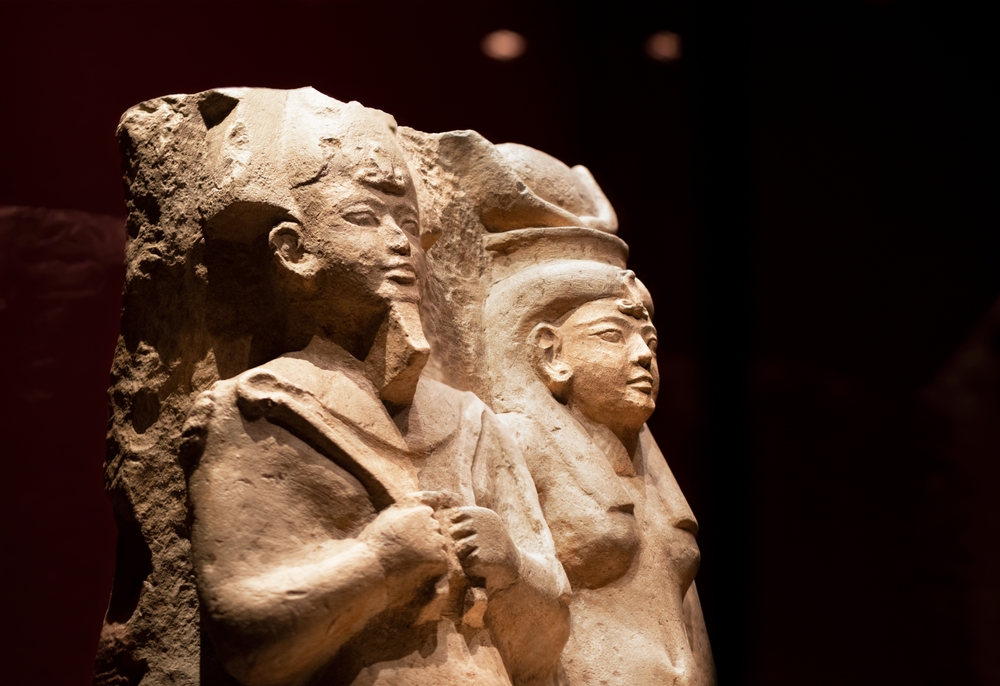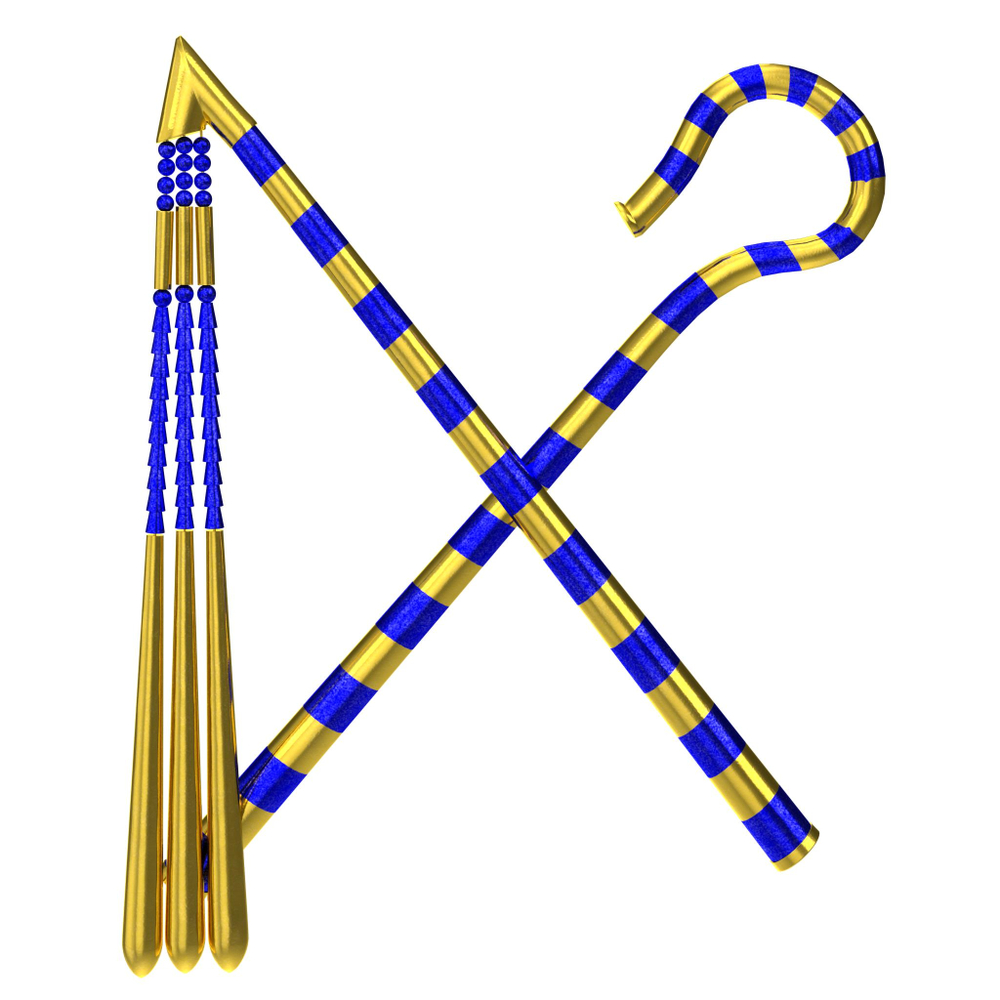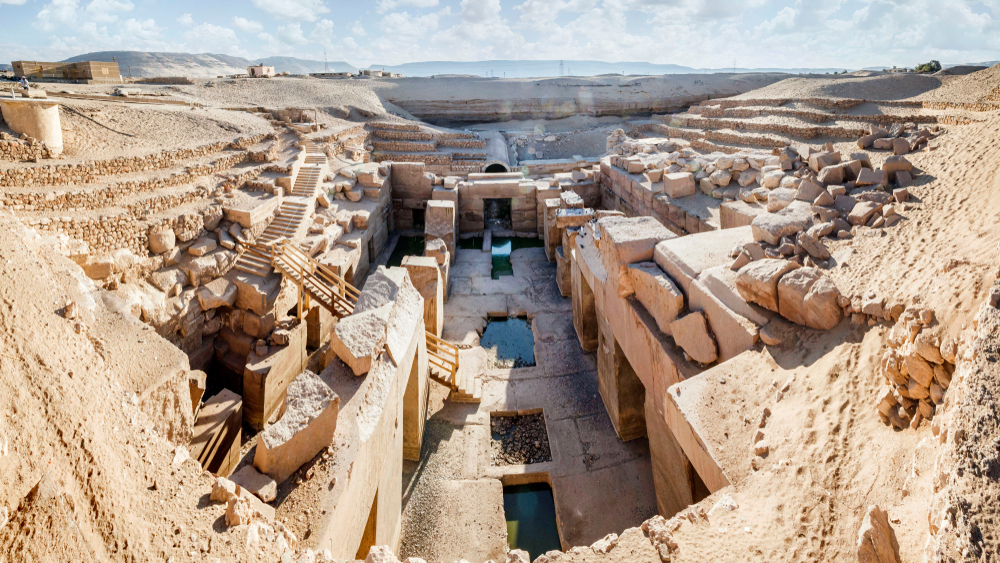Egyptian mythology is rich with fascinating gods and goddesses, each with their own stories and powers. Among them, Osiris stands out as a compelling figure. Whether you're learning about ancient history or simply curious about the legends that have shaped cultures, Osiris offers many intriguing tales. Let's explore the myths, legends, and powers of Osiris, the god of the underworld.
Jump to:
Who is Osiris?

Osiris is one of the most important gods in Egyptian mythology. He is often depicted as a green-skinned deity with a pharaoh’s beard, partially wrapped like a mummy, and wearing a distinctive crown adorned with two large ostrich feathers. His green skin symbolises rebirth and regeneration, reflecting his role as the god of the afterlife.
Recommended for you!
Best SellersThe Myths of Osiris
Osiris’ myths embody themes of death, resurrection, and eternal life, revealing insights into ancient Egyptian beliefs about the afterlife and the cyclical nature of existence.
Osiris’ Story
The story of Osiris is one of betrayal, death, and resurrection. Osiris was originally the king of Egypt, loved by his people for bringing civilisation and prosperity. However, his brother Set, envious of Osiris's power, conspired to murder him. Set tricked Osiris into lying in a beautifully decorated coffin, which he then sealed and threw into the Nile River. This act of treachery left Osiris's wife, Isis, heartbroken.
Determined to bring her husband back to life, Isis embarked on a quest to find his body. She succeeded in finding Osiris, but Set discovered their plan and tore Osiris’s body into fourteen pieces, scattering them across Egypt. Undeterred, Isis gathered the pieces with the help of her sister Nephthys and magically reassembled Osiris. This act of devotion and magic allowed Osiris to be resurrected, although he could no longer live among the living. Instead, he became the ruler of the underworld, guiding souls in the afterlife.
Osiris Risen: The Legacy of Rebirth
The story of Osiris does not end with his role as the ruler of the underworld. His resurrection symbolises hope and renewal, themes that resonated deeply with the ancient Egyptians. The annual flooding of the Nile, which brought fertile soil and prosperity, was seen as a reflection of Osiris's own rebirth and life-giving powers.
Osiris and the Underworld
As the god of the underworld, Osiris plays an important role in the journey of souls. Egyptians believed that after death, a soul would enter the Hall of Ma'at, where Osiris would judge them. The heart of the deceased was weighed against the feather of Ma'at, the goddess of truth and justice. If the heart was lighter than the feather, the soul could enter the afterlife. If heavier, it would be devoured by the fearsome creature Ammit.
Osiris's role in the afterlife highlights his significance in Egyptian culture as a symbol of rebirth and eternal life. His resurrection by Isis also exemplifies themes of love, loyalty, and the triumph of good over evil.
Symbols of Osiris

Osiris's symbols reflect his role as the god of the underworld, resurrection, and fertility. Each symbol carries deep significance and highlights different aspects of his divine responsibilities.
- Djed Pillar: This ancient symbol represents stability and strength, believed to be the backbone of Osiris. It signifies his enduring power and resilience, even in death.
- Crook and Flail: Often depicted holding these symbols, the crook represents kingship and shepherding, while the flail symbolizes fertility and the sustenance provided by agriculture. Together, they emphasise his authority and role as a provider.
- Green Skin: Osiris is often shown with green skin, symbolising rebirth, regeneration, and the fertility of the Nile Valley. This colour reflects his ability to bring life and renewal.
What Powers Does Osiris Have?
Osiris’s powers are extensive, reflecting his status as the god of the underworld and resurrection. His abilities were vast and impactful in both the mortal and divine realms.
- Lord of the Afterlife: Osiris rules the underworld, overseeing the judgment of souls and the afterlife. He ensures that the righteous are rewarded with eternal life, while the wicked face their consequences.
- Resurrection and Rebirth: Osiris embodies the cycle of life, death, and rebirth. His resurrection by Isis symbolises hope and renewal, influencing the belief in an afterlife and the resurrection of the dead.
- Fertility and Agriculture: Osiris is also the god of fertility and agriculture, bringing prosperity to the land. His connection to the Nile’s flooding symbolises the life-giving waters that rejuvenate the soil and ensure bountiful harvests.
- Judgment and Justice: In the Hall of Ma'at, Osiris judges the souls of the deceased. He maintains balance and justice, ensuring that each soul receives fair treatment based on their earthly deeds.
Osiris's Relationships and Family Tree
Osiris's relationships and family connections highlight his central role within the Egyptian pantheon. His associations with other deities reflect his importance in the themes of life, death, and rebirth.
- Isis (Wife): Osiris's wife is Isis, the goddess of magic, motherhood, and fertility. Their union represents the powerful bond of love and devotion. Isis played a role in resurrecting Osiris and ensuring his legacy through their son Horus.
- Horus (Son): The son of Osiris and Isis, Horus is the god of the sky, kingship, and protection. He avenged his father’s death by defeating Set and restoring order to Egypt. Horus's triumph signifies the continuity of the divine lineage and the restoration of justice.
- Set (Brother): Set, the god of chaos and destruction, is Osiris's brother and nemesis. Their conflict is central to many myths, representing the struggle between order and chaos. Set's betrayal and murder of Osiris set the stage for the themes of death and resurrection.
- Nephthys (Sister-in-Law): Nephthys, the sister of Isis and Set, is a protective goddess who aided Isis in reassembling Osiris's body. Her involvement in the resurrection of Osiris underscores the themes of family loyalty and the cooperation of deities.
- Anubis: Anubis, the god of mummification and the afterlife, is often associated with Osiris. Some myths suggest that Anubis is the son of Osiris and Nephthys, making him an important figure in the funerary rites and the protection of Osiris’s body.
- Hathor: In some traditions, Hathor, the goddess of love and motherhood, is linked to Osiris as a nurturing and protective figure. Her presence in Osiris's myth underscores the nurturing aspect of rebirth and the afterlife.
Set and Osiris: The Eternal Conflict
The rivalry between Set and Osiris is one of the most dramatic elements of Egyptian mythology. Set, the god of chaos and destruction, represents everything opposite to Osiris's order and life. Their conflict highlights the balance of good and evil, life and death, creation and destruction. This duality is a central theme in many myths and serves to explain natural and cosmic phenomena.
Osiris and Horus
Osiris and his son Horus share a powerful connection in Egyptian mythology. After Osiris’s death, Isis gave birth to Horus, who would later avenge his father's death. Horus’s battles with Set are legendary, ultimately leading to Set’s defeat and Horus ascending the throne. This succession emphasises the continuity of kingship and the protection of divine order.
Osiris's Worship and Legacy

Osiris's significance in ancient Egyptian culture is evident through his extensive worship and the lasting impact he has had over the centuries. His worship involved various rituals, offerings, and the creation of numerous statues, each playing a role in maintaining his presence and influence.
The Temple of Osiris in Egypt
One of the most remarkable sites dedicated to Osiris is the temple at Abydos. This temple, believed to be one of the burial places of Osiris, is a significant archaeological site. It features stunning reliefs and inscriptions that tell the story of Osiris and other gods. Visiting this temple offers a glimpse into the grandeur and spirituality of ancient Egyptian civilisation.
The Mystery of Osiris Statues
Statues of Osiris have been found throughout Egypt, often in large numbers. These statues were believed to house the spirit of the god, allowing his presence to be felt in the physical world. The craftsmanship and sheer number of Osiris statues reflect his importance in Egyptian religion.
These statues also served as a means for the god to exert his power and provide guidance in the afterlife. Many of these statues were placed in temples and other sacred spaces, where priests performed daily rituals to honour Osiris and invoke his blessings.
Making Offerings to Osiris
To honour Osiris, ancient Egyptians made offerings of food, drink, and other items. These offerings were meant to appease the god and ensure his favour. Common offerings included bread, beer, meat, and incense.
Today, those who feel a connection to Osiris may offer green candles, symbols of fertility, or other items that represent his power and attributes. Modern worshippers might also create altars adorned with images of Osiris, flowers, and stones associated with his energy, such as malachite and turquoise. Making these offerings is seen as a way to connect with Osiris's nurturing and regenerative energy, and his ability to guide souls in the afterlife.
Osiris in Modern Egyptology
The fascination with Osiris continues to this day. Egyptologists and archaeologists are constantly uncovering new findings related to this ancient god. For instance, the search for the tomb of Osiris has been a significant focus of modern excavations. The discovery of what is believed to be Osiris’s tomb has provided valuable insights into ancient Egyptian burial practices and beliefs about the afterlife.
Recommended for you!
Best SellersFrequently Asked Questions about Osiris
Why is Osiris often depicted as a mummy?
Osiris is frequently shown as a mummy to signify his death and resurrection. His mummified form highlights his role as the god of the underworld and the afterlife, representing the eternal nature of the soul and the promise of rebirth.
What are the main festivals dedicated to Osiris?
One of the most significant festivals dedicated to Osiris is the "Khoiak Festival," celebrated annually in ancient Egypt. This festival marked the beginning of the agricultural year and included rituals that symbolised the death and resurrection of Osiris. It involved the creation of Osiris gardens, where seeds were planted in mud figures of the god, symbolising rebirth and the fertility of the land.
What is the significance of the Djed pillar in Osiris worship?
The Djed pillar is a symbol of stability and endurance, often associated with Osiris. It represents his spine and is linked to his resurrection and eternal life. During the "Raising of the Djed" ceremony, Egyptians celebrated the renewal of life and Osiris's triumph over death.
How did Osiris influence other cultures and religions?
Osiris's myth and attributes influenced various cultures and religions beyond Egypt. For instance, some aspects of his story, such as death and resurrection, have parallels in Greek mythology and early Christian narratives. His role as a judge of the dead also influenced later conceptions of the afterlife and divine judgement.
Is Osiris considered a good or bad deity?
Osiris is generally regarded as a benevolent deity. He is seen as a god who brings order, justice, and resurrection. His story emphasises themes of love, loyalty, and the triumph of good over evil, portraying him as a figure of hope and renewal.
Study Egyptian Mythology for £29
If you're captivated by the myths and legends of Osiris and want to learn more about Egyptian mythology, consider enrolling in the Egyptian Mythology Diploma Course offered by Centre of Excellence. This fascinating course provides you with a deeper understanding of ancient Egypt, its gods and goddesses, and their enduring impact on culture and spirituality. For a limited time you can access the course for a discounted price of £29!












